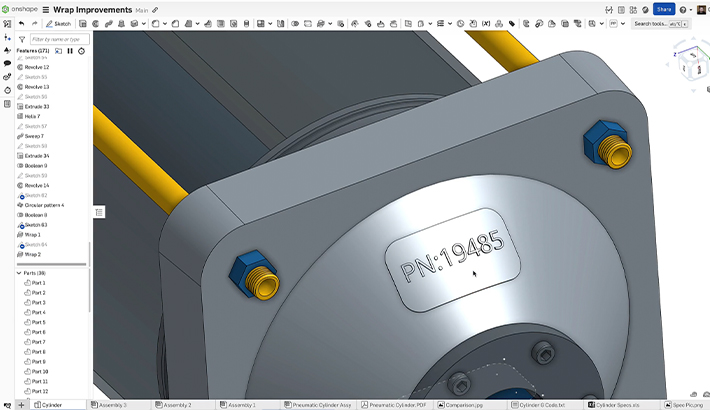During the “Introducing Onshape Simulation” webinar, we received dozens upon dozens of questions about the functionality and capability of Onshape Simulation. While the hour was jam-packed full of information and demonstrations, there wasn’t enough time to answer all of those questions.
But we don’t want to leave anyone hanging. If you’re unable to find the answers on the Onshape Simulation page, here’s additional information on all of your answers to the most-asked questions.
Who Can Perform 3D CAD Simulation?
Professional and Enterprise account holders can access Onshape Simulation and are able to perform simulations on owned Documents. However, those account holders can’t perform simulations on Documents that are owned by Standard or Light accounts, unless the Document is transferred to Professional or Enterprise users.
Where in the Design Process Do You Use Simulation?
Simulation can be used at any time when early feedback can be used to make design decisions. In the following demonstration, Greg Brown, Onshape Vice President of Product Management, is debating whether to use gussets or fillets and uses Onshape Simulation to help him make the decision.
In the above clip, Greg shows us how easy it is to access simulation results for load displacements, von Mises stress, and safety factor on a rock crawler frame.
How Does Collaboration Work in Simulation?
“Onshape Simulation is Onshape.”
What that means if all of the collaborative capabilities that Onshape offers for modeling are also available in Onshape Simulation. For example, like in the video below, you’re able to follow a colleague’s work in real-time and see CAD’s simulation results in real-time as your colleague makes changes.
How Do Onshape’s Mates Work with Simulation?
We received a ton of questions about the “under the hood” functionality of Onshape’s unique take on Mates and Onshape Simulation. To explain how it works, please watch the clip below where Chrisopher Gromek, PTC Senior Product Manager, shares some relevant insights into how Onshape Simulation works.
Who Can Access Simulation Results?
There were a few questions about sharing CAD simulation results with customers or other third parties who don’t have an Onshape account. Just like anything else in Onshape, you can share with anyone through Publications and other sharing tools!
What’s Up with the Color Scheme?
We chose the Viridis color scheme because it has the most applicability to anyone regardless of color blindness or color sightedness. Not only that, but the variation in color and tone is uniform across the spectrum so the visual impact is stronger for how much stress or deformation.
Users are able to change the color scheme to red-to-blue, plasma, or rainbow.
Quick Fire Questions & Answers
Still looking for an answer? Here are some quick answers:
How would this simulation work in top-down modeling where all parts are fixed and there are no mates?
It will work with grouped, fixed parts if it makes sense to simulate it this way.
When you run a simulation on an Assembly and you inspect the deformation results, will the simulation recognize the interference between surfaces there if it occurs?
No, but results can be inferred by the value of the displacement and your knowledge of the materials and systems being designed.
Are simulations exposed through the Onshape API? For example, can we set up a simulation and alter the load through an endpoint?
Not at this time.
Will it be possible to define displacement as a load instead of forces?
Not at this time.
Is there a way to show the deformed assembly in a 2D view and add dimensions? Can you export deflected geometry?
Not at this time.
Can you see the stress profile on the section plane?
Not at this time.
How much simplification needs to be done with very complex assemblies to keep the analysis responsive?
Part simplification should not be required, but the amount of parts does have a limit, so simulating smaller sub-assemblies will yield faster results.
Can you explain how a model is grounded/constrained within the assembly?
The degrees of freedom (DOF) indicators on the parts in the list are new and do a good job of showing which parts have DOF and which are fixed. For the simulation to run, the system needs to be placed in a static state by ensuring all parts have no DOF.
What is the best practice for splitting surfaces for load application?
The most common way to achieve this is to draw a 2D sketch and split the surfaces, but this is not a requirement for Onshape Simulation as the loads are transferred in the assembly via the bodies anyway.
Is it possible to exclude parts from being simulated?
Yes, suppress them or make them the fixed items in the simulation.
The relationship between mates and surface-to-surface connections really is that easy?
Yes!
So, you can just add a mate and the system figures out the connections based on geometry?
Yes!
Want to see what Onshape Simulation can do for your business? Request a demo and get a deep dive into all of the possibilities when using a cloud-native product development platform.
















